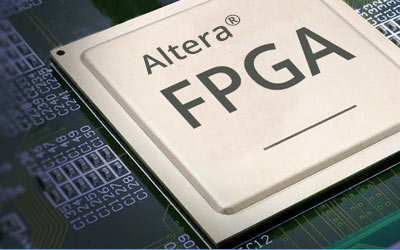Lattice's Proposed Acquisition of Altera? A Major Shift in the FPGA Market
Recently, the semiconductor industry was rocked by a bombshell announcement: FPGA manufacturer Lattice Semiconductor (hereinafter referred to as Lattice) is contemplating a full-scale acquisition bid for Intel's Altera. This potential merger and acquisition (M&A) activity is extremely rare in the FPGA market and indicates that significant changes may be on the horizon.
01 Acquisition Background and Motivation
Lattice, a company specializing in low-power FPGA solutions, excels in products tailored for mobile and user-friendly applications. In contrast, Altera, as one of the key players in the global FPGA market, holds significant technology in the mid-to-high-end FPGA market. By acquiring Altera, Lattice aims to expand its technological capabilities and market share, paving the way for further growth. Additionally, Lattice sees potential in emerging fields such as artificial intelligence (AI), cloud computing, networking, and edge computing. Acquiring Altera would bolster its product line and solutions, enabling it to better capitalize on these market trends.
 02 Possibilities and Challenges of the Acquisition
02 Possibilities and Challenges of the Acquisition
Despite Lattice's interest in acquiring Altera, the process faces numerous challenges. With a market capitalization of approximately $8 billion, Lattice lacks the financial resources to acquire Altera out right, which is valued between $17 billion and $22 billion. Therefore, Lattice may require additional financial support or seek financial partners to complete the acquisition. Furthermore, Intel originally planned to bring Altera to the market through an initial public offering (IPO) rather than a complete sale.
03 Industry Impact
If successful, this acquisition will have a profound impact on the global FPGA market. Lattice would instantly become a leading player in the global FPGA market, with a significant boost to its market share and technological prowess. Simultaneously, this deal would open up more market space and technical collaboration opportunities for Chinese FPGA enterprises, encouraging them to accelerate their technological research and market expansion efforts.
04 Additional Considerations
 The potential acquisition also highlights the ongoing consolidation trends in the semiconductor industry. With rapid technological advancements and intensifying competition, companies are increasingly looking to mergers and acquisitions to strengthen their competitive positions. For Lattice, acquiring Altera would not only expand its product portfolio but also allow it to tap into Altera's customer base and distribution channels, further enhancing its market presence.
The potential acquisition also highlights the ongoing consolidation trends in the semiconductor industry. With rapid technological advancements and intensifying competition, companies are increasingly looking to mergers and acquisitions to strengthen their competitive positions. For Lattice, acquiring Altera would not only expand its product portfolio but also allow it to tap into Altera's customer base and distribution channels, further enhancing its market presence.
Moreover, the acquisition could trigger a ripple effect in the FPGA market, prompting other players to consider similar M&A activities to maintain their competitiveness. This could lead to a more consolidated market, with fewer but larger players dominating the landscape.
05 Conclusion
Lattice's consideration of acquiring Altera is undoubtedly a significant event in the FPGA industry. Despite the challenges it faces, if the acquisition is successful, it could reshape the competitive landscape of the global FPGA market, bringing new opportunities and challenges for related enterprises. As the semiconductor industry continues to evolve, companies must remain agile and forward-thinking to navigate the challenges and seize the opportunities ahead.
Trending IC Parts
To find urgently needed integrated circuit components for your project, check out Conevo electronic Components spot distributors. More information about chip, please contact Conevo Elec. Here are some of the latest popular electronic chips.
● The EP1C6F256C6N is a Cyclone series FPGA from Intel, featuring 598 logic blocks, 185 I/Os, and operating at a maximum frequency of 250 MHz.
● The EP1C3T144C8 is a Cyclone series FPGA from Intel, featuring 2910 logic elements, 104 I/Os, and a maximum operating frequency of 275 MHz.
● The EP1810LI-25 is a Classic EPLD family device from Intel/Altera, featuring 48 macrocells, 12 dedicated inputs, and operating at a maximum frequency of 40 MHz.
Website: www.conevoelec.com
Email:info@conevoelec.com








